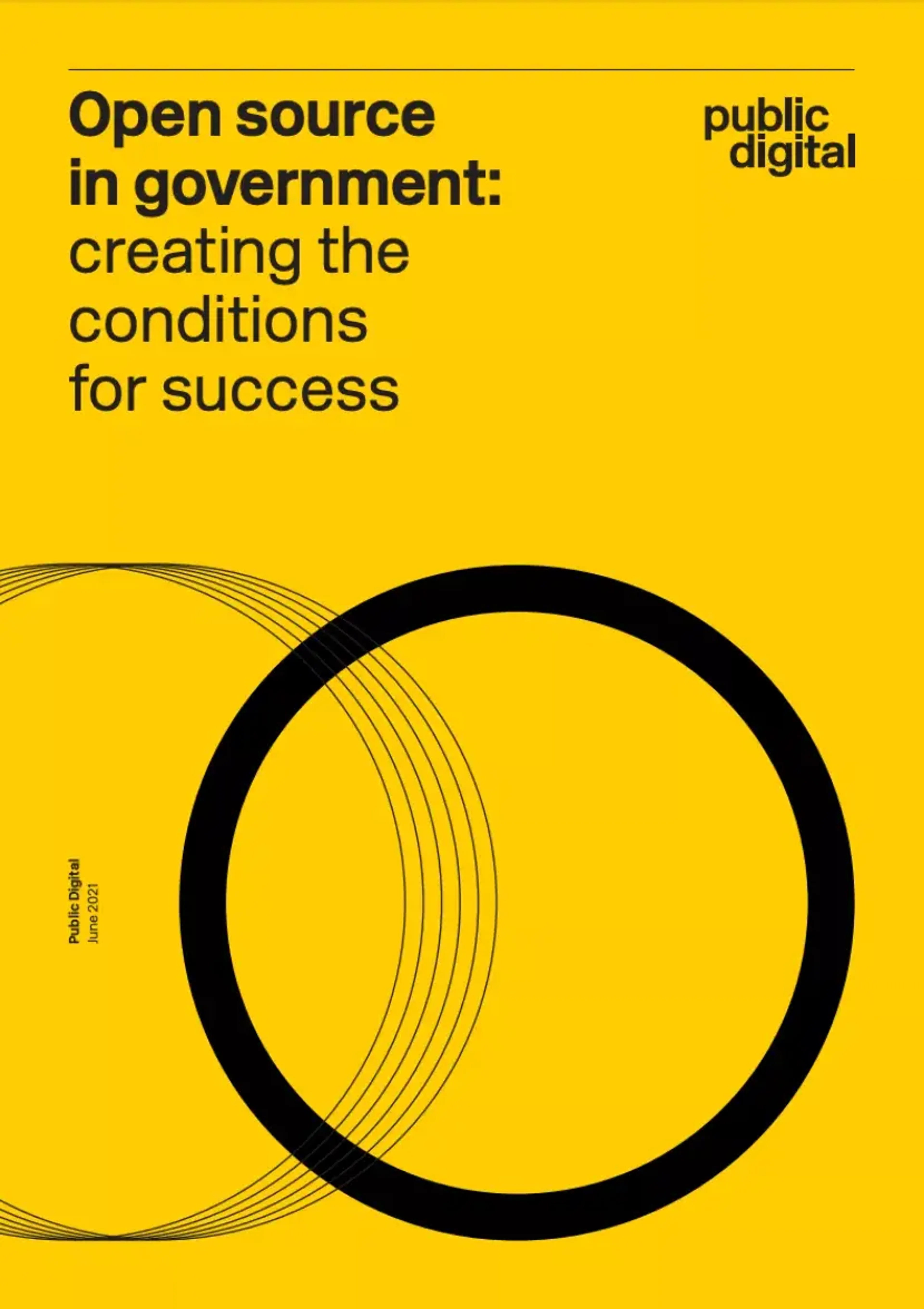
Beyond programmes: changing how we change in the public sector
In the public sector both internationally and in the UK, programmes have long been government’s go-to vehicle for making major changes to public services.
The UK’s Government Functional Standard calls programmes “unique, temporary, flexible organisations created to coordinate and oversee the implementation of projects and related work”. In brief, they are there to produce a set of pre-specified changes or outputs, and then vanish.
But where programmes are implemented in order to create a service, or transform a service, this approach carries a cost.
In this post, I’ll examine the dominance of programmes in the UK public sector, the consequences of this discontinuous model of change, and suggest an alternative approach for building, evolving and sustaining public services over their whole lifecycle.
From the institutional biases in Whitehall to the personal interests of political figures, there are multiple factors that explain central government’s attraction to programmes:
They are large. The big numbers involved in programmes signal strategic importance, so the bigger the better. The successful delivery of large programmes can be career-defining, and the budgets and headcount associated with them can feel professionally validating.
They are flexible. Programmes are designed to be highly flexible, and this enables scope creep: their jurisdiction can be gently stretched to cover pretty much anything that can be related back to their strategic outcomes. Once the programme infrastructure has been established, the task of adding new activities or new deliverables is more achievable than aiming to deliver them through non-programme channels.
They are familiar and legitimised. While implementing a programme carries a high admin burden for central government, the burden is a predictable one. People know what “good programme management” looks like because it is codified, taught and institutionalised. There are widely accepted procedures around programmes which, if followed, appear to validate the success of programmes based on producing deliverables, irrespective of whether any of the intended outcomes are met.
They (can) promise star power. Politicians like to leave a legacy, but the brevity of the average ministerial tenure makes it unlikely they will see the payoff of long-term policies. The shorter lifespan of programmes, however, give politicians the opportunity for policy announcements, press coverage, and a reliable stream of material for comms strategies.
Despite being government’s vehicle of choice for changing and updating public services, the characteristics of most programmes, in fact, make them highly unsuitable.
Programmes are temporary. Change is constant
Unlike programmes, which come and go, services endure. They exist for as long as the public needs them, delivering day in and day out. In order to serve the public efficiently they must evolve and continuously improve with proactive lifecycle management, supported by appropriate stewardship, governance and funding.
By contrast, programmes have defined end-points. In theory they will run for up to several years, and then terminate.
But thanks to the continuous requirements of services, the termination of programmes is never as neat as it promises to be.
Some programmes hit cliff edges in funding, only to be all but abandoned to traditional service management teams expected to do little more than “keep the lights on”, while others get caught in an endless loop of programme resets and renewals, unable to escape their “unfeasible” label.
The result is a landscape of programmes which consistently fail to deliver outcomes, and which raise the question of whether alternative frameworks might exist to challenge the dominance of programmes in service transformation.
A programmatic definition of change
The change infrastructure of government operates under the assumption of discontinuous programmatic change: change is designed as a one-off, significant and abrupt change to the status quo.
This means that, in theory, once the change is complete the programme can be wrapped up, making way for other programmes and projects in the government portfolio. At the point of programme closure, the project director moves onto the next big thing, the delivery team is wound down, and the responsibility for maintaining and running the service becomes someone else’s problem (usually a neglected and underfunded service management team).
The strategy of building services through programmes - without also creating enduring teams to continuously improve the services - imposes an artificial cliff edge for the teams responsible, and creates the suggestion that upon programme exit a service is largely “done” changing.
Government frameworks - for funding, for governance, for delivery - reinforce this logic because they’re so often split into two categories: “change” and “business-as-usual” (BAU).
The fantasy of business-as-usual
Services in “BAU” are viewed as finished - as if the service design and development is done, all that’s left is to run it and do occasional maintenance. This is why it is so common to see “Cinderella” services which, funded at or below subsistence levels, steadily decline over time, mostly without leadership noticing.
A notable example is the Ministry of Justice prisons visits service, designed to help citizens book visits with people in prisons. The service was well researched, well-designed, given adequate BAU headcount and funding, and saw reassuring take-up after its launch in 2014, but a 2020 report revealed that once built, “the funding disappeared, the service atrophied, the tech stack atrophied, and take-up fell right away”.
Despite their failings, these neglected services are out of sight and so out of mind. That is, until an attention-grabbing incident occurs, or the service is declared to be no longer fit-for-purpose, and the cycle of discontinuous change starts once more.

Change is continuous
This system fails because the reality is that change is a constant. Improving services is not a short-term deliverable, but a continuous process.
There is often no obvious point at which a service is objectively complete, so the designated end-point is arbitrary at best and inappropriate at worst. Sometimes, the end-point occurs when the service has become unrecognisable compared to what the programme set out to do. In these scenarios, the deliverables have changed, the business case has been undermined, and supplier contracts are being stretched beyond their original intent. Effectively, the appearance of a programme has become distant from its reality.
This is why so many government programmes, despite their pre-set closure dates, fail to actually end. Programme resets are common, and many new programmes are just rebadged or renewal programmes of earlier versions. In these instances, scope creep becomes ever harder to resist.
Of course, we would have no need for these large-scale programme resets and renewals - effectively periodic realignments with reality - if we adopted a new approach that allowed services to continuously evolve to meet changing user needs.
Sustaining public services
Our current approach is defined by high-scrutiny programme governance, project-centric business cases, and stage-gated project phases.
It doesn’t fit the risk profile, shape and pace of service transformation, continuous improvement work and service stewardship, because as an approach it’s over-engineered upfront, and under-supportive over the longer term.
There can certainly be a place for programmes in the public sector. But we also need an approach to delivery that works for building, evolving and sustaining public services over their whole lifecycle.
That requires major culture change in central government:
We need to fix funding in traditional “run and maintain” phases so that it covers significantly more than just software patches and licensing. If your service funding goes off a cliff when your programme closes, you are removing any hope of it evolving to stay relevant, effectively putting an expiry date on your service. And it might be a date sooner than you expect.
We need long-term stewardship of services by an enduring service team. That means moving away from teams disbanded at the end of a programme, and moving towards funding and organisation design that allows leaders to build permanent, cross-functional, multidisciplinary teams.
We need governance appropriate for sustaining services, supporting decision-making at the pace of delivery (rather than at pre-defined stage gates) with a focus on continuous improvement against outcomes over the long-term.
We need to recognise spending on sustaining services as the strategic investment that it is: something that will build and retain asset value, and avoid service decline and obsolescence.
Much of this change is held back by current government accounting and spending control models: the Treasury focuses largely on projects with high net present value (NPV) and a calculated whole lifetime cost, concepts which aren’t easily applied to services without an expiry date. What’s more, funding in the form of capital expenditure is much more available than budgets for the operational expenditure required for building enduring service teams.
As long as the enabling environment is geared to support programmes as the only major vehicle for any significant change, it is hard to see how services can sustain and thrive outside of programmes.
Changing how we change
Our collective mental model for public services needs to move away from discontinuous “big bang” change, to something that also has room for significant continuous change.
There are promising green shoots hinting at a potentially growing appetite for this in Whitehall: the slow but steady emergence of service-thinking and service-centric operating models across central government and agencies; and HM Treasury and CDDO efforts to deliver on Mission 6 of the cross-government digital strategy.
If we change the way we think about change in public services, we can change the way we fund, govern, and buy services in complex, uncertain and evolving contexts. We can grow the legitimacy of alternative, complementary delivery frameworks that can sit alongside programmes in public service transformation.
Service leaders in government can finally feel encouraged and empowered to adopt the last target operating model they should ever need, one that maximises adaptability and prevents atrophy. Programme leaders can plot a route to escaping their “unfeasible” programme delivery labels.
And our public services will be all the better for it.
Written by

Audree Fletcher
Director
